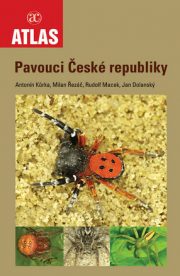Bibliografie
Meta menardi neboli křižák temnostní: experimentální vhled do ekologické tolerance pavouka temnot. Meta menardi, or the cave spider: experimental insights into the ecological tolerance of the Prince of Darkness. Pavouk 58: 14–15 (in Czech, English summary) 2025
- Autoři
- František Frederik Ceperko
- Abstrakt
- Summary: In October 2010, an exceptionally large colony of Meta menardi spiders was recorded in the cellar of a family house in the village of Vápenná (Jeseník district). This species, commonly inhabiting caves and other hypogeic environments, was present in hundreds of individuals despite the absence of natural vegetation, minimal insects and a completely artificial environment consisting of concrete walls. This situation raised the question of what adaptive mechanisms allow this spider to survive in such extreme conditions. From the original colony, 30 individuals were selected for laboratory observation. They were divided into six groups and exposed to different stress factors: extreme cold (repeated freezing to -15°C), permanent lighting, permanent darkness, food ad libitum, starvation and the presence of black mould (probably of the genus Rhizopus). The aim was to observe survival, behaviour and possible manifestations of adaptation in an environment simulating different types of ecological stress. Results showed that Meta menardi was able to survive repeated short-term freezing without apparent effects, but long-term exposure led to mortality. Permanent light had a significantly negative impact – the spiders were inactive, did not hunt and gradually died. In contrast, the group kept in permanent darkness showed stable behaviour, active hunting and web formation. The behaviour of the group with food ad libitum was also interesting – the spiders did not hunt more than necessary and ignored the redundant prey. Starvation led to a rapid onset of stress behaviour, aggression and cannibalism, with all individuals dying within six weeks. The most striking results came from the group exposed to the fungus. Here, spiders repeatedly handled contaminated prey – after catching a cricket, they wrapped it in a web and left it in contact with the mould for several days before consuming it. In some cases, they even transferred the mould from the contaminated substrate to higher parts of the web. This behaviour may indicate a previously undescribed form of interaction with microorganisms – either for food preservation or as part of digestion. However, the hypothesis of a symbiotic relationship requires further observation. This observational study, although conducted outside of an academic setting, provides valuable insight into the ecological plasticity of Meta menardi. It demonstrates that this spider is able to survive under a wide range of stress conditions, and that some of its behaviours – particularly in contact with microorganisms – may represent previously unexplored adaptive strategies. The results may serve as a starting point for further research on invertebrate-microbial interactions in subterranean ecosystems.


